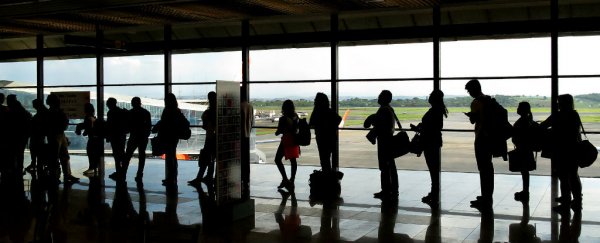The frequent flyers among you will know that a lot of time at the airport is spent waiting around and queueing up. Not only is that bad news for passengers, it also leads to flight congestion and wasted fuel for the airlines. Now researchers have come up with a computer model that could lead to a much more efficient flow of people and planes.
The new algorithm focusses particularly on the waiting time after passengers have boarded and before the plane takes off, with weather forecasts, current traffic on the runway, and the day's flight schedules all taken into consideration. By factoring in these variables, the model can help air traffic controllers work out when to get planes moving and when to hold them at the gate.
"In our field tests, we showed that there were some periods of time when you could decrease your taxi time by 20 percent by holding aircraft back," said one of the team, Hamsa Balakrishnan from MIT. "Each gate-held aircraft saves 16 to 20 gallons (60 to 75 litres) of fuel, because it's not idling. And that adds up."
The new study builds on previous work by Balakrishnan. In 2007, she was part of a team studying departure patterns at John F. Kennedy International Airport, Newark Liberty International Airport, and Philadelphia International Airport in the US, finding that these hubs were congested 10 to 20 percent of the time. At Newark, for example, planes could be waiting for runway space for up to 52 minutes.
When the model was tested using real historical data from 2007 and 2010 it was found to accurately predict queue lengths, plus or minus two aircraft. It's hoped that air traffic controllers might eventually use the algorithm to see what the consequences of certain actions would be on the other planes waiting to take off and overall delay times.
"If you predict only 10 aircraft are likely to take off in the next 15 minutes, you probably don't have to release 25 aircraft from the gate," said Balakrishnan. "Ultimately, you want to find the right number of aircraft you need to be releasing in order to make sure you don't have a huge amount of congestion on the ground, and at the same time you're not starving the runway."
Further testing is due to take place on other airports across the country, but the model is easy to implement and can't come too soon - aviation authorities are expecting "widespread congestion" in US airports over the coming years, with departure metering believed to be one of the best ways of tackling it.
The research has been published in the journal Transportation Science.
